
An argumentative essay is a piece of writing in which the author states an argument and supports it using evidence.
An argumentative essay is also known as an expository essay, a position essay, or an opinion essay.
I’m Tutor Phil, and in this tutorial I’ll show you how to structure an argumentative essay. I’ll also give you a full sample essay to illustrate how each part works.
The Three Main Parts of An Argumentative Essay
An argumentative essay consists of the following parts:
- Introduction
- Body
- Conclusion
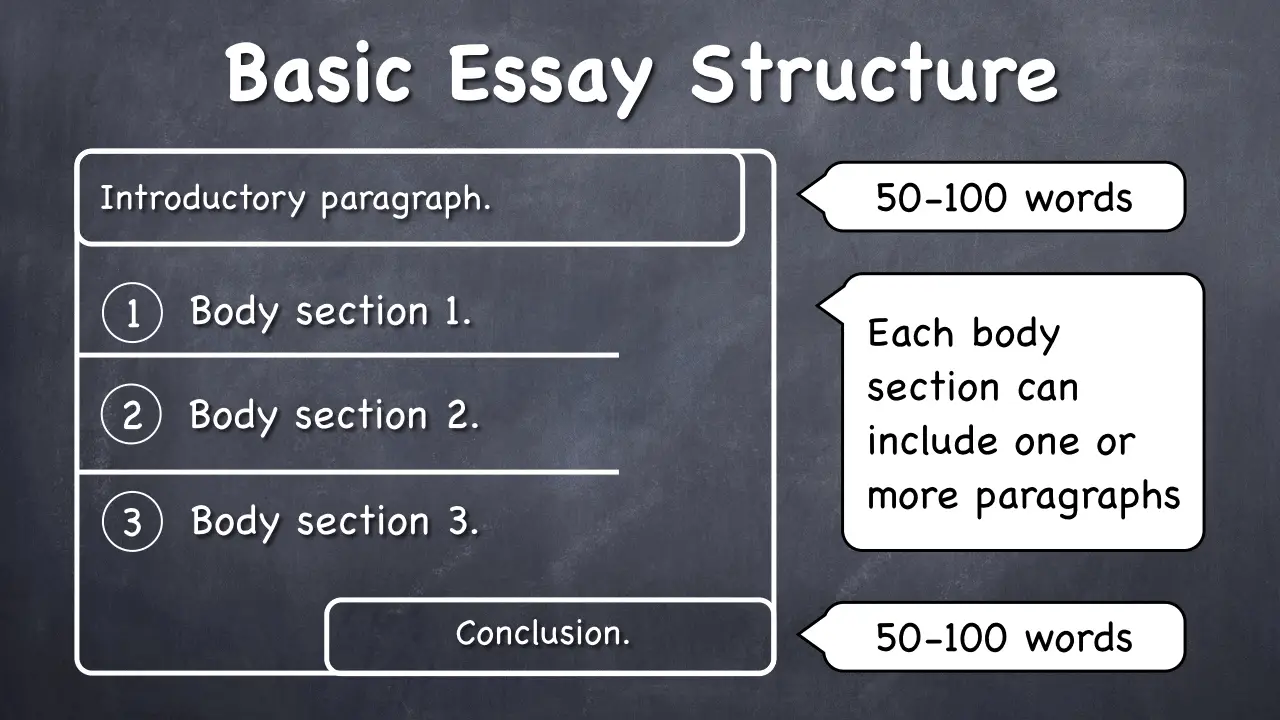
This is a very basic understanding of an opinion essay, a bird’s eye view. So, in the following sections, I’ll show you how each part works.
Part 1. Introduction
In a basic, college-level expository essay, an introduction is usually just one paragraph. It can contain more than one paragraph, but you would mostly find that in longer, advanced essays written in graduate school.
An introductory paragraph consists of three parts:
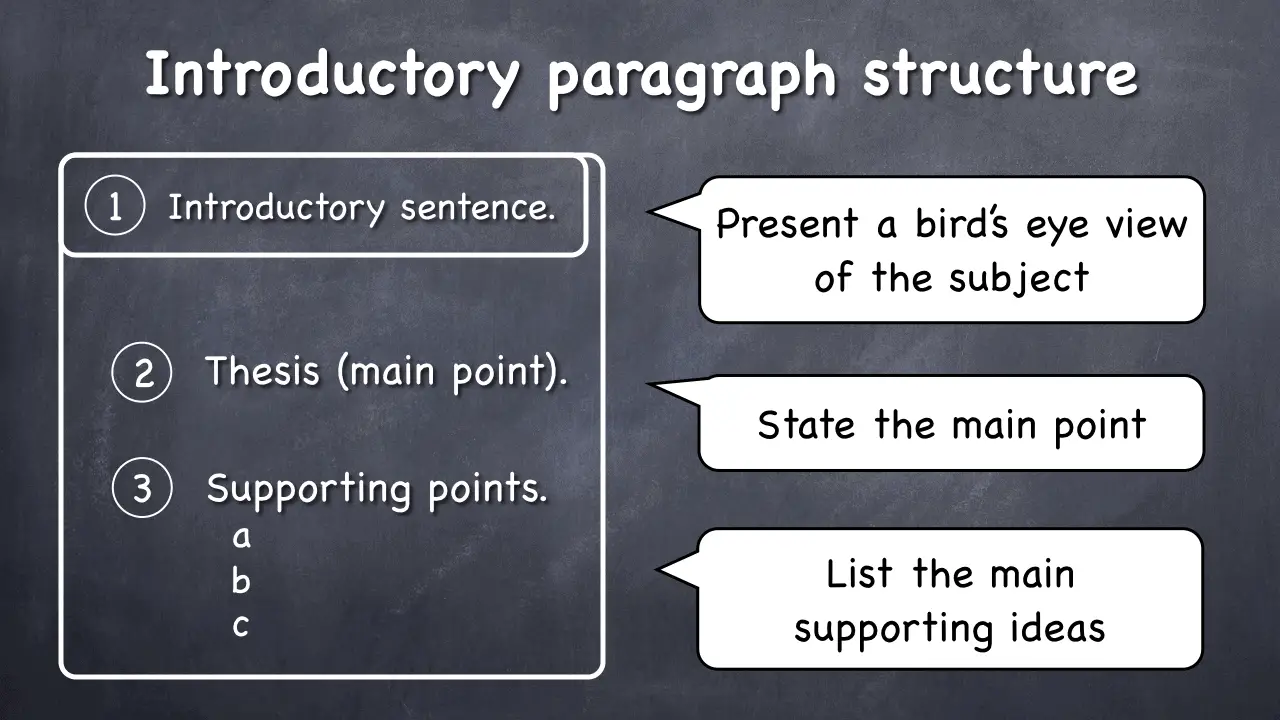
Introductory sentence
An introductory sentence is just a way to pull the reader from the outside world into the world of your essay.
Your teacher or professor expects you to introduce your main point in some way. This is the reason for you to write it. Otherwise, you could just get straight to the point. But since an introduction is expected, just write it.
An introduction can be one or more sentences. But I generally don’t recommend writing more than two sentences before you get to your main point. Just one sentence is usually enough.
Thesis
A thesis is your main point, usually expressed in one sentence. You can express it in two sentences, but that is usually unnecessary.
In a basic college-level essay, your main point should be relatively simple and easy to understand. So, one sentence usually does the job.
In your thesis, you should present your main argument clearly and succinctly.
Supporting points
In your essay, you are presenting an argument and then supporting it. You will need more than one supporting point to back up your main point.
I always teach my students to keep it simple and use the Power of Three.
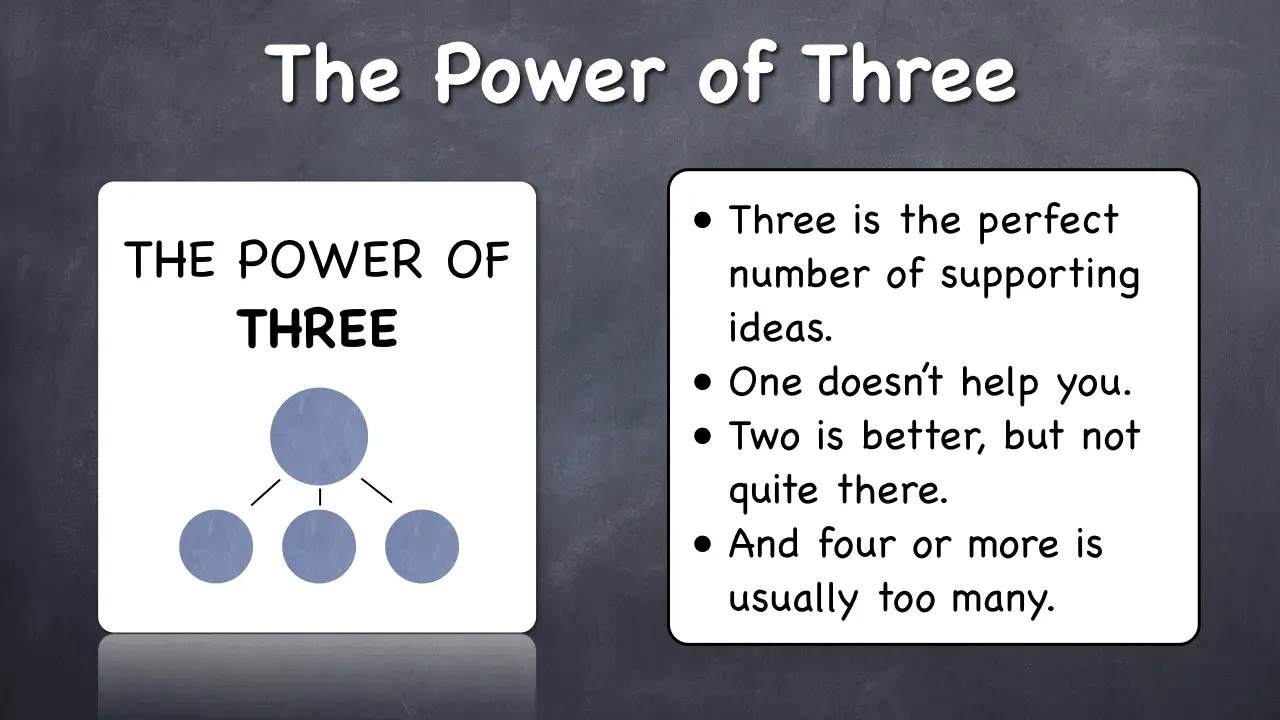
This is a very reliable way to divide your main topic into subtopics, which is the same as finding three supporting points for your main point.
You can reliably find three supporting ideas for any subject and any essay. Trust me. Just use this technique, come up with three supporting points, and you’re golden.
You’ll see how this works in the sample essay that’s coming up shortly. But for now, let me give you an example of an introductory paragraph.
Example of an introductory paragraph in an argumentative essay
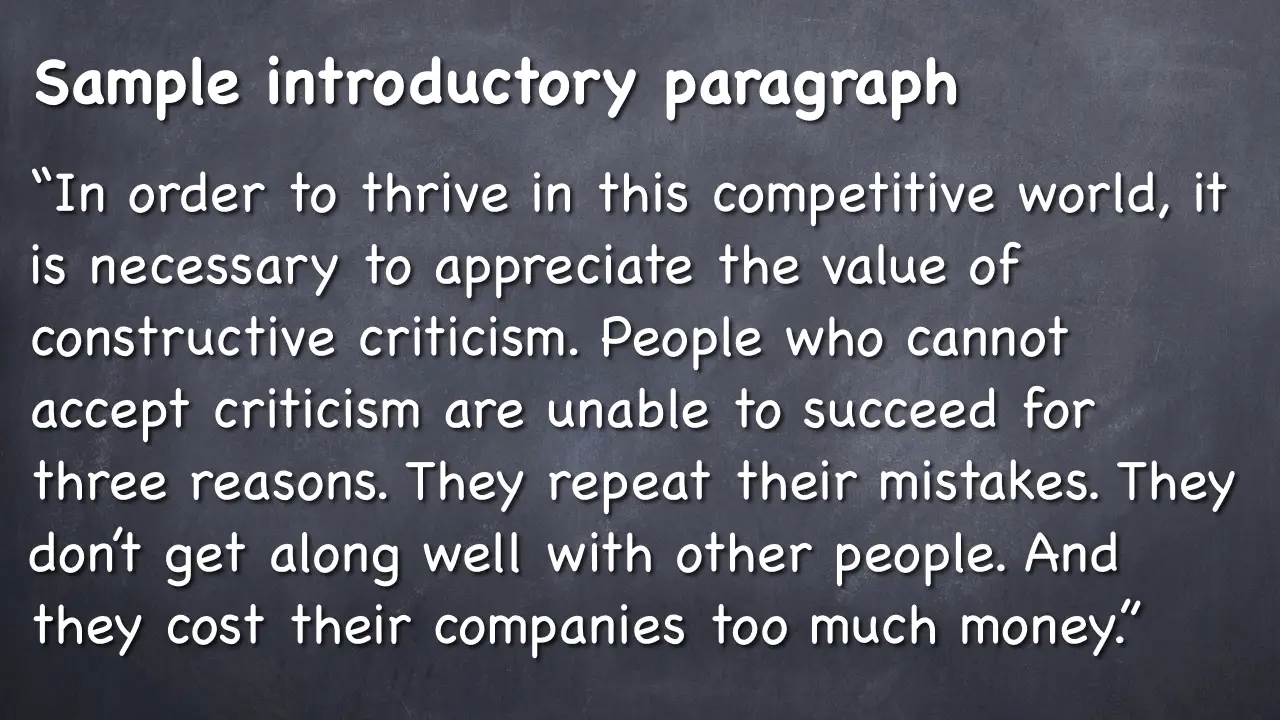
In this paragraph:
- The first sentence is introductory. It pulls the reader into the subject of the essay.
- The second sentence is the thesis, the main point.
- And the last three sentences are the three supporting points.
Part 2. Body of the essay
The body of the essay consists of the main sections that contain all the support for your argument.
If you use the Power of Three to divide your topic into subtopics, then you’ll have three main sections in your essay. I highly recommend that you organize your essay this way.
As you saw in the first diagram, each section of the body of the essay can contain one or more paragraphs. In a basic 5-paragraph essay, each section is a paragraph.
But you can subdivide your sections into subsections, and then each subsection will contain one or more paragraphs. It all depends on how long your essay has to be.
But let’s stick with the basic 5-paragraph structure in our tutorial.
The structure of a body paragraph
No matter how many paragraphs you choose to have in the body of the essay, each body paragraph should be structured the following way:
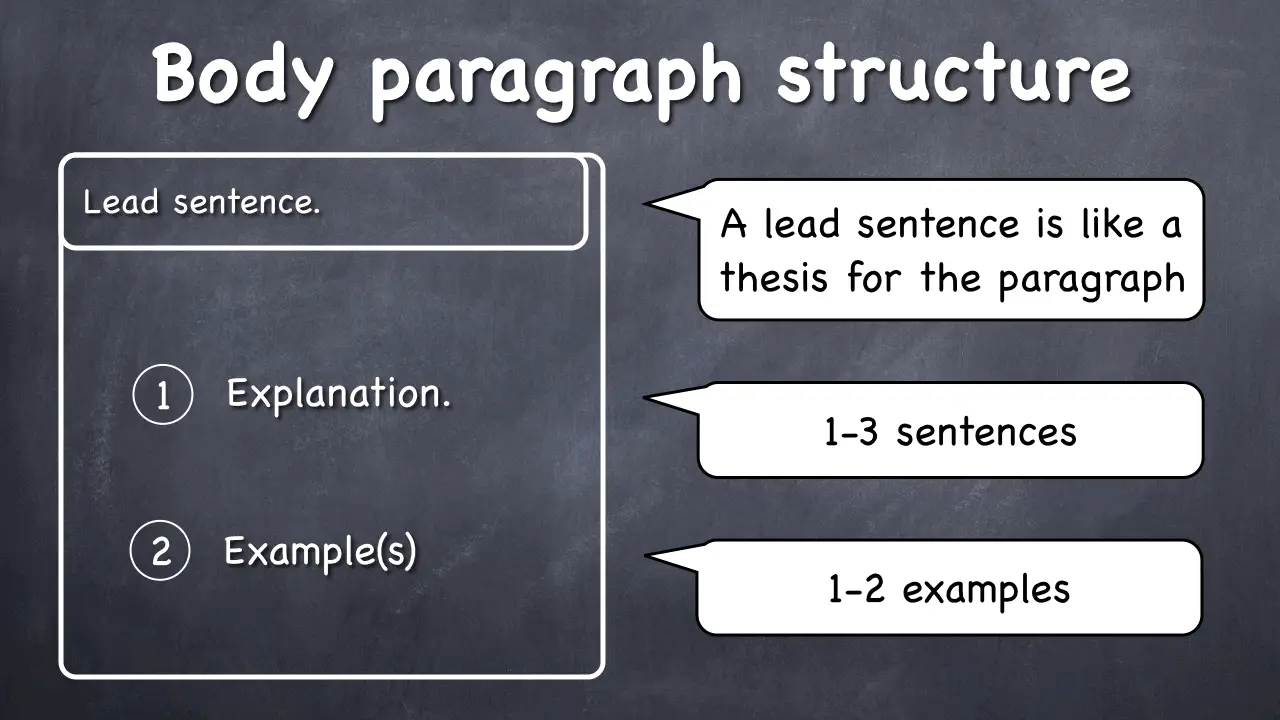
Lead sentence
Think of the lead sentence as a thesis for your paragraph, as its main point. In this sentence, just state one of your supporting points.
Explanation
In this part of the body paragraph, provide some kind of a description or an explanation that would support or clarify the point you’re making in the lead sentence.
This is your chance to educate your reader on the subject of this paragraph.
Examples
Finally, this is the part where you provide the most specific information to support your point. Examples are fun both for the writer and for the reader.
For the writer, this is an easy way to expand your content. And readers love examples because they are usually little stories about concrete individuals. They are simply the most interesting parts of any essay.
Once you’ve written all your body paragraphs, you’re done with the body of the essay and should proceed to the final part – the conclusion.
Part 3. Conclusion
The easiest and most reliable way to write an essay conclusion is to use simple restatement.
Basically, you restate your main and supporting points, just like they were presented in the thesis statement, only in different words. You’ll see how this works in our sample essay.
The essay below is an edited version of a writing sample one of my subscribers sent me.
The essay question is:
“Are science and mathematics courses more or less beneficial than history and literature courses?”
Because we’re asked to compare science with humanities, this will be a compare and contrast essay. Here is how I recommend to structure such an essay:
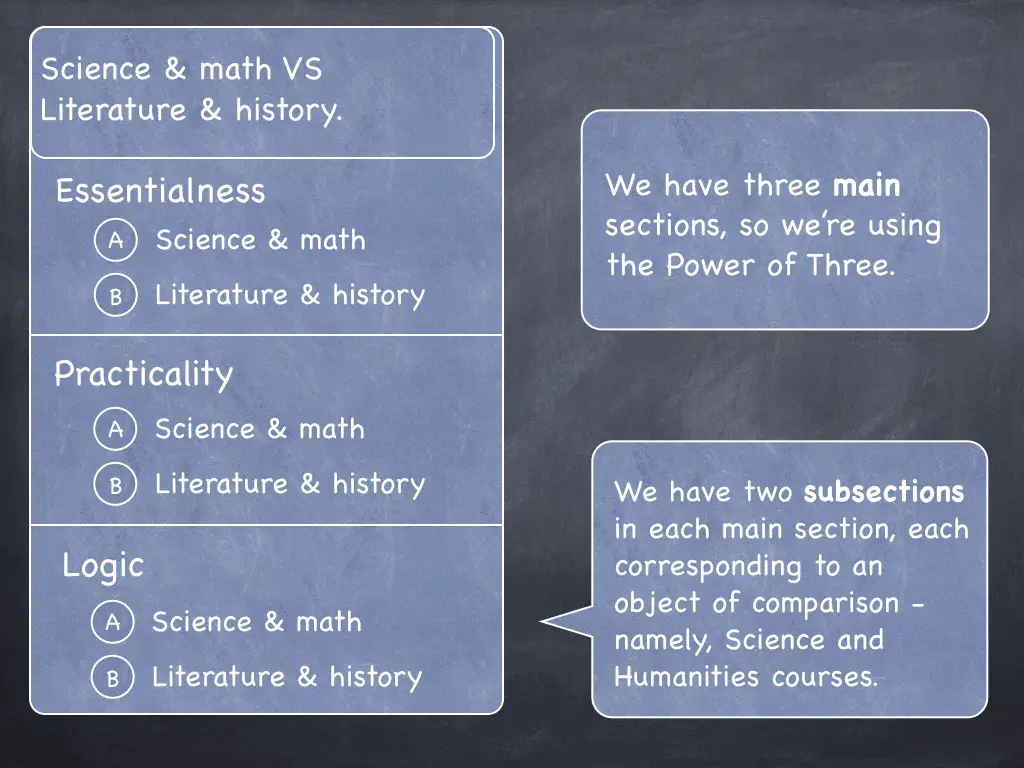
Note that we still have only three body paragraphs. But each paragraph contains information about both the sciences and the humanities.
Let’s take a look.
Sample Argumentative Essay
“In today’s competitive professional world, students often ask themselves if they should take more science or humanities courses. Science and mathematics courses are more beneficial to students than literature and history classes, for three reasons. First, the knowledge of science and math is essential to learning other important disciplines. Second, it is more practical in everyday life than literature and history. And finally, science and math courses develop logic skills the way humanities courses can’t.
First and foremost importantly, science and mathematics are essential for learning economics, finance, or mechanics, which are disciplines that are invaluable in today’s marketplace. Anyone who lacks such knowledge will also have difficulty grasping computers, internet, stocks, insurance, and other precise subjects. But the knowledge of literature and history barely has any effect on any skills that are vital to today’s economic atmosphere.
Science and mathematics are much more practical in people’s daily and professional lives. They show people how to avoid electric shock when doing repairs. They also help people optimize their incomes and expenses effectively. These subjects also play an important role in the workplace. Operating machinery and being responsible for market or finance analysis call for the knowledge of math. But the humanities are hardly helpful in the workplace. Literature and history can only be valuable to people who teach them, providing them with income. But these teachers represent only a small percentage of the population.
Finally, science and mathematics are great training in logic. They teach students how to analyse numerous variants and show how to cope with conflicting evidence. They cultivate mental perception and stimulate the development of intelligence. These skills are critical in making such decisions as buying a house or choosing the right equipment. History and literature, on the other hand, provide only limited value. The lessons of history are not likely to help solve difficult logical problems that the modern person encounters almost every day.
To conclude, science and math courses are a much better bet for the majority of students than literature, history, and other courses in humanities. The precise disciplines are just more essential and practical. They also develop the skill of logic, which is crucial in our technological age.”
Key Takeaways from the Sample Essay
The introductory paragraph
- The first paragraph begins with a one-sentence introduction.
- Next, the thesis summarizes the entire argument perfectly and succinctly.
- Finally, the three supporting points are presented.
The body of the essay
- Here is the Power of Three in practice – the body contains three main sections.
- Each paragraph begins with a lead sentence that states the main supporting point.
- Each paragraph contains a more general form of evidence – an explanation.
- Each paragraph also contains more specific examples, such as “computers, internet, and stocks” in the second body paragraph.
The conclusion
- The conclusion paragraph simply restates the points made in the introductory paragraph.
- It is also structured the same way.
- It employs different words to avoid sounding repetitive.
And this concludes our tutorial. I hope that now you have a clear idea of:
- What an argumentative or expository essay is
- How it is structured
- How you can write your own.
If you are new to essay writing, I highly recommend this essay writing for beginners tutorial that I wrote.
Cheers!
Tutor Phil
